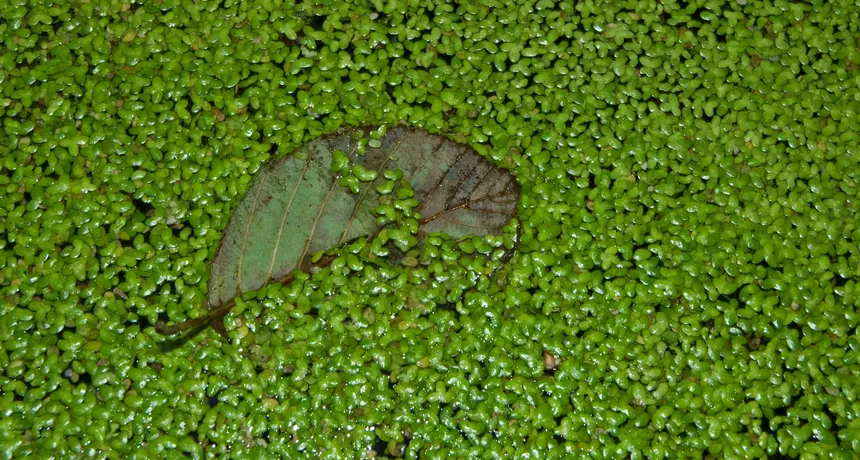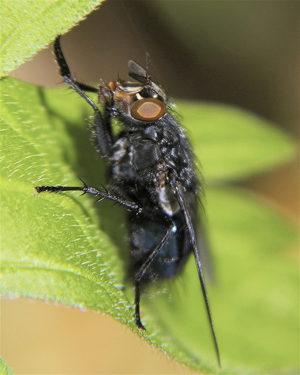Why death smells so deadly

SURPRISING STINK The distinctive smell of dead animals comes largely from molecules like cadaverine and putrescine that are made when proteins break down, but the decomposition of high-protein plants like duckweed (shown) can make a deathly smell too.
Tom Gill/Flickr
- More than 2 years ago
When I was in graduate school, I once gassed out my lab with the smell of death. I was studying the products of plant decomposition, and I had placed copious quantities of duckweed into large tubs and let the mix decompose for a few weeks. Duckweed is a small floating aquatic plant; it looks harmless enough. But when I dragged my tubs into the lab and set up a pump and filtration system, all hell broke loose. The filter clogged, the back pressure threw the hose off the pump, and a spray of decomposed mess flew all over a poor professor who had come in to help. For the rest of the day, he smelled like a pile of dead raccoons.
That day, I learned about cadaverine and putrescine. These two molecules are produced during the decomposition of proteins, when the amino acids lysine and ornithine break down, and they are largely responsible for the smell of rotting flesh. My mistake in the lab was to think that rotting plants are more innocuous than rotting animals. Duckweed, it turns out, has such high protein levels that it’s used as animal feed, and those proteins, like any proteins, can create a deathly stench.
The smells of cadaverine and putrescine tend to provoke a strong reaction (as I learned once the duckweed stench subsided and my labmates were able to return to the lab). But not every animal finds the odors disgusting. Carrion flies, rats and other animals that eat or lay eggs in dead things are attracted to the molecules. So researchers have started to look for exactly how animals tune in to these smells. Pinning down animals’ odor detectors gives researchers a way to study aversion or attraction to certain objects. And understanding how these behavioral responses work will, I believe, help researchers clarify why humans feel the distinct emotion known as disgust.
A study of zebrafish published November 11 in the Proceedings of the National Academy of Sciences is a good start. The research shows that the fish have specialized odor detectors that allow them to smell extremely low levels of cadaverine. Like people, zebrafish really don’t like cadaverine; they’re quick to swim away if they catch even a whiff. And the olfactory system of zebrafish turns out to be fairly similar to that of humans. As in people, nerve cells in the zebrafish’s olfactory system are studded with various proteins called receptors, and each type of receptor is able to latch onto particular odor molecules. When a smelly molecule like cadaverine gets snagged, the receptor molecule sends a signal to the brain, and the combination of signals reaching the brain is interpreted as an odor.

It makes sense for zebrafish — and humans — to avoid cadaverine, since dead things are chock full of pathogens. And that brings me to theories of human disgust. Darwin proposed that humans feel disgust to avoid things that taste bad. Freud saw disgust as a repression of desire. And in recent years, psychologist Paul Rozin has developed a nuanced view of disgust involving aversions to infection, eating animals and violations of ideal physical form. I reviewed a fascinating book on the topic, That’s Disgusting, by Rachel Herz last year, and am now reading a new book by hygiene researcher Valerie Curtis, Don’t Look, Don’t Touch, Don’t Eat.
Curtis says that disgust doesn’t have to involve complicated psychology; it all boils down to pathogens. Throughout evolution, those who didn’t learn to stay away from dead stuff and other sources of infection didn’t do so well. That evolved instinct forms the basis of an expanding repertoire of disgust, from avoiding bodily fluids to reviling dirty politicians. This evolutionary view of disgust relies heavily on animals developing sensitive radar for potential pathogens, so understanding how zebrafish, people and other animals tune in to cadaverine could help confirm Curtis’ ideas.
So far, TAARs are looking like widely shared disgust sensors. Work in mice published in Nature earlier this year linked TAARs to mice’s aversion to predator pee, and knocking out the gene for a certain TAAR made mice throw caution to the wind and ignore puma pee. Humans also have TAAR receptors, and one was found earlier this year that detects trimethylamine, which helps create the odor of rotting fish, nasty bad breath and vaginal odors from bacterial infection. But people don’t have TAAR13c, the zebrafish cadaverine receptor; that molecule is specific to bony fishes. Korsching and colleagues suggest that a variety of TAARs or other receptors may have evolved separately in humans for detecting cadaverine and other nasties.
Hopefully further work will nail down how people pinpoint cadaverine and other disgusting smells. It’s clear that we are attuned to death odors. After my little lab incident, it took graduating to finally shake the title of “duckweed lady.”






